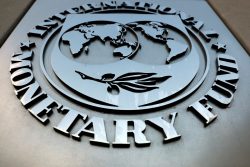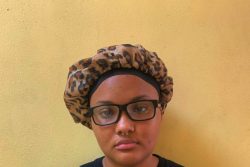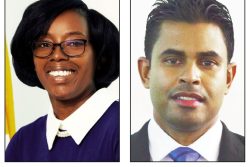By Rory Fraser
Rory Fraser is Professor of Forest Economics and Policy at Alabama A & M University. He is a graduate of the University of New Brunswick, Canada, and Pennsylvania State University and has spent 34 of the last 38 years in the UK, Canada, Jamaica, and the USA either attending or teaching at universities and working in forestry related fields.
UG represents the confluence of different ethnicities, religions, regions, educational experiences, domestic conditions, and political persuasions in Guyana. It is the place where some of the best educated and most motivated young people interact with some of the most dedicated and reflective members of older generations. It is a place of intellectual, emotional, and social ferment. Universities are places where the leaders of the future come to develop an appreciation of themselves and “the other” while coming to grips with the realities of the world, unfettered by the parochialisms of their homes and local communities. This is the space where the identity and confidence of many of these future leaders are really tested for the first time, because they are being treated and confronted as responsible adults. Here they must demonstrate the discipline, resilience, and determination to demonstrate facility with a core area of knowledge. UG is Guyana’s primary investment in its human capital – the skills, knowledge, and experience possessed by an individual or population, viewed in terms of their value or cost to an organization or country.
 Human capital is one of those intangibles (unable to be touched or grasped, difficult or impossible to define, or precisely measured), one of those things like social capital (the networks of relationships among people who live and work in a particular society, enabling that society to function effectively) that are critical to the development of a country. This was made evident in three seminal reports by the World Bank, “Expanding the Wealth of Nations” (1997), “Where Is the Wealth of Nations”(2005) and “Changing Wealth of Nations” (2011). In its efforts to better hone development efforts in reducing global poverty, the Bank systematically engaged some of the world’s leading economists, philosophers, and systems thinkers in trying to understanding the source, creation, and changes in wealth across the globe. These studies document that the largest single component of wealth in most countries is in their intangible assets (useful or valuable things). The richer the country the bigger the share of these assets in total national wealth. In 2005, the richest (OECD = Western European, Australia, Japan, New Zealand, and the US) countries of the world had 81% of their national wealth in intangible capital, 17% in production facilities (machines, structures, and equipment) and only 2% in natural capital (forests, farms, energy, minerals, etc).
Human capital is one of those intangibles (unable to be touched or grasped, difficult or impossible to define, or precisely measured), one of those things like social capital (the networks of relationships among people who live and work in a particular society, enabling that society to function effectively) that are critical to the development of a country. This was made evident in three seminal reports by the World Bank, “Expanding the Wealth of Nations” (1997), “Where Is the Wealth of Nations”(2005) and “Changing Wealth of Nations” (2011). In its efforts to better hone development efforts in reducing global poverty, the Bank systematically engaged some of the world’s leading economists, philosophers, and systems thinkers in trying to understanding the source, creation, and changes in wealth across the globe. These studies document that the largest single component of wealth in most countries is in their intangible assets (useful or valuable things). The richer the country the bigger the share of these assets in total national wealth. In 2005, the richest (OECD = Western European, Australia, Japan, New Zealand, and the US) countries of the world had 81% of their national wealth in intangible capital, 17% in production facilities (machines, structures, and equipment) and only 2% in natural capital (forests, farms, energy, minerals, etc).
These studies have led the Bank to conclude that global (per capita or per person) wealth increased by 17% between 1995 and 2005, with intangible wealth growing the fastest. The most rapid growth in intangible wealth was attributed to increased educational attainment as well as improvements in institutions, governance, and other factors that contribute to better, more efficient use of all of a country’s capital – produced, natural, and human. The relationship between development and capital was best seen in the lower-middle-income countries (i.e. LMC with Gross National Income (GNI) per capita of between US$996 and US$3,945), like Guyana (GNI per capita of US$ 3,030). Intangible capital increased from 45% to 51%, and produced capital went from 21% to 24%, but natural capital declined from 34% to 25%. The significance of this shift is most telling when the Bank attributed the global increase in wealth to significant increases in the value of natural resources. By a technique called decomposition analysis they determined that in places such as Latin America and the Caribbean there were increases in: agricultural land values because of increases in crop production area, crop yields, and livestock production; forest land values because of increases in timber prices; and subsoil (mineral and energy) values as a result of the higher rents paid. What these findings demonstrated was LMCs such as China and India were converting their rents from natural resources into production capital (e.g. factories and other infrastructure), and the earnings from these into increasing intangible assets (e.g. human capital and markets).
China’s development was singled out by the Bank for closer examination because of the phenomenal growth during the period of study. However, an excellent study “China’s Overt Economic Rise and Latent Human Capital Investment: Achieving Milestones and Competing for the Top” funded by the German Institute for the Study of Labor (IZA) in 2010, while critical at times, relates the tale of the phenomenal improvements in higher education which underpinned and fueled this economic juggernaut. In the years since 1978 when Deng Xiaoping launched the modern reform era through Gai Ge Kai Fang or open-door policy, China has become a prolific source of scholars and scholarship, especially in the sciences. This was accomplished by major investment in universities, in sending (or encouraging) students abroad and creating spaces for them to contribute to the priority areas in the economy. As a result, China’s universities have become a draw, not only for the many Chinese scholar-refugees who took advantage of US amnesty provisions after the Tiananmen Square incident but a growing number of (some privately funded) international faculty and students. In effect, China has demonstrated that even the most dictatorial central government can make significant improvements in the nation’s well being by creating the conditions for an intelligentsia to grow and flourish. It is no surprise therefore, that the United Nations in 2010 identified China as having the 2nd highest change in Human Development Index (HDI, an estimate of the health, wealth, and education in a country) between 1980 and 2010. India was ranked 6th.
Guyana is a conundrum. In 2000, 65% of Guyana wealth was in its natural capital, 21% in production capital, and only 14% in intangible capital. The Bank estimates per capita wealth in Guyana grew only 22% from US$15,110 in 1995 to US$19, 210 in 2005, despite, a 112% increase in natural capital and a 23% increase in produced capital between 2000 and 2005. By these estimates Guyana had significant losses (between 2000 and 2005) in intangible capital per capita, which declined from US$ 2,176 to negative US $4,770. Those who lived through that period in Guyana history might well understand that conundrum. But that is only part of the story. In 2011, the UN ranked Guyana 117 on the HDI list, 13 places lower than the 104 rank in the 2010 HDI list. This shift may provide a clue to the long term trend; Guyana was ranked at 81st among the 129 countries for which changes in HDI between 1980 and 2010 were determined. So, while places like China are improving the wealth and by some estimates the quality of life for its citizens, Guyana was rolling around in sub-mediocrity.
If the reader thinks that it is unfair to compare Guyana to China, let’s look at Guyana’s neighbours and see what they were doing. In 1995 the LMCs of Latin America and the Caribbean (LAC) average per capita wealth of US$ 71,536 was five times Guyana’s. By 2005, their wealth had grown to US$79,194, an 11% increase. Between 2000 and 2005 these countries built wealth by investing increases in value from their natural capital base (a quarter smaller (US $7,885) than Guyana’s (US$10,301)) into intangible assets that rose from 69% to 71% as a share of national wealth.
What these data on Guyana reflect is what is writ plain in the UN 2010 Human Development Report. Guyana ranks among the top 104 HDI ranked countries and is: 2nd in maternal mortality ratio; 2nd lowest in contraceptive prevalence, 3rd lowest in antenatal coverage; 14th in multidimensional poverty; 11th lowest in treated with respect; 3rd lowest in primary school teachers trained to teach; 4th lowest in physicians per 10,000 people; 2nd in 15-24 years old females and 4th in adults with HIV; 2nd in infant mortality; 4th in female and 11th in male mortality rates; 12th in per capita remittance inflows; 2nd lowest in GDP per capita; and 17th in mobile phone charges.
So, how does Guyana come out of this tail spin? The first Caribbean Human Development Report in 2012 (much discussed recently in Guyana’s media) opens with a 1955 quote from Sir Arthur Lewis that economic growth should increase the range of human choices and goes on to make the point “if people are generally regarded as the centre of the development process in that freedom of choice, standard of living, and general welfare are the purpose of development… their participation, creativity, and power in society, the economy and polity are the primary drivers of these outcomes”. The World Bank in “Education Quality and Economic Growth” makes two points: What’s been missing is attention to the quality (not quantity) of education – ensuring that students learn – and it is the quality of teachers that most influences student outcomes. Their take home message: improving educational quality requires a focus on institutions and efficient education spending, not just additional resources.
This begs the question, who teaches the teachers? Most of the progressive countries in the world have recognized the wisdom (the quality of having experience, knowledge, and good judgment) embodied by their universities.
Most leaders, even those with dictatorial pasts, have come to recognize what business guru Leslie Weatherly preaches – human capital is a unique and elusive asset that can be influenced, but never completely controlled – and have invested in these edifices (buildings, complex systems of beliefs). Why? because good universities train good students to become good citizens, good social networkers, good managers, and good leaders. Investing in universities improves human capital which in turn improves the other intangible assets: social capital, institutional capital, and leadership. In turn these assets create wealth from natural capital by charging appropriate rents, ensuring efficient use of the resources, creating or enhancing production capabilities, and further enhancing human capital. At the same time they help to solve troubling social ills: crime; abuse; violence; corruption; cultural decay, etc. The progressive LMCs have applied the “virtuous cycle” (a condition in which a favourable circumstance or result gives rise to another that subsequently supports the first) embodied in centres of educational excellence, universities.
The featured speaker at the last (45th) Convocation Ceremony of the University of Guyana, Chancellor of the Judiciary Carl Singh (ag) made the point:
“….University autonomy has been defined as the freedom of the university to govern, appoint key officers, determine the conditions of the service of its staff, control students admissions and academic curricula, control its finances, and generally to regulate itself as legal entity functioning in accordance with its statutes,……..the university’s freedom of expression, freedom of action, freedom to disseminate information, and freedom to conduct research and distribute knowledge without hindrance or restriction….These twin concepts facilitate the flowering of thoughts and ideas and are the bedrock of flourishing and meaningful academia. Dilution of the degree of university autonomy or academic freedom should be stoutly resisted, since history shows that interference in the affairs of universities lead to intellectual regression……The concepts of university autonomy and academic freedom must be shown the respect that is shown to the doctrine of the separation of powers which in constitutionally recognised here in Guyana.”
Maybe it is time to revisit the role the University of Guyana must play in Guyana’s development! Wouldn’t that be exciting?








